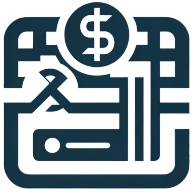6 Best Practices for Maintaining Accurate Payroll Records
Payroll accuracy is crucial for any business, impacting both employee satisfaction and legal compliance. Modern technology and best practices offer powerful solutions to maintain precise payroll records. This article explores six key strategies that can significantly improve payroll accuracy and efficiency in your organization.
- Automate Updates and Conduct Regular Audits
- Implement Cloud-Based Payroll Software for Accuracy
- Use Biometric Time-Tracking for Precise Records
- Cross-Train Payroll Staff to Reduce Errors
- Integrate Payroll Systems with HR Databases
- Regularly Update Tax Tables for Compliance
Automate Updates and Conduct Regular Audits
To maintain accurate and up-to-date employee salary data, I implemented the following strategy:
- Automation of updates — integrating the HR system with accounting and personnel records to automatically update data when positions, salaries, bonuses, and other parameters change.
- Regular audits and reconciliations — monthly or quarterly data audits to identify and correct possible errors or outdated information.
- Clear procedures for changes — all salary changes go through approved requests and are documented with the reason, date, and responsible person.
Advice for others:
Ensure you implement a centralized, unified accounting system integrating all related departments and establish transparent approval processes for changes. This greatly reduces the risk of errors and helps keep information current in real time.

Implement Cloud-Based Payroll Software for Accuracy
Cloud-based payroll software offers real-time tracking capabilities that greatly enhance the accuracy of payroll records. By utilizing such systems, businesses can ensure that all employee hours, wages, and deductions are recorded instantly and without error. This technology also allows for easy access to historical data, making audits and reporting much simpler.
Additionally, cloud-based solutions often come with automatic updates, ensuring that the system always complies with the latest payroll regulations. The centralized nature of these platforms also reduces the risk of data inconsistencies across different departments. Implement a cloud-based payroll system today to streamline your payroll process and maintain precise records.
Use Biometric Time-Tracking for Precise Records
Biometric time-tracking systems provide an unparalleled level of precision in recording employee work hours. These advanced systems use unique physical characteristics such as fingerprints or facial recognition to clock employees in and out, eliminating the possibility of time theft or buddy punching. Biometric tracking also automates the time-recording process, reducing human error in data entry.
This technology integrates seamlessly with many payroll systems, ensuring that accurate time data flows directly into payroll calculations. Furthermore, biometric systems often come with robust reporting features that can help identify attendance patterns and optimize workforce management. Upgrade to a biometric time-tracking system to ensure the highest level of accuracy in your payroll records.
Cross-Train Payroll Staff to Reduce Errors
Cross-training payroll staff is a crucial strategy for maintaining accurate payroll records. By ensuring that multiple team members are proficient in various payroll tasks, businesses can significantly reduce the risk of errors due to absence or turnover. Cross-trained staff are better equipped to spot inconsistencies and can provide valuable second opinions on complex payroll issues.
This approach also fosters a deeper understanding of the entire payroll process among team members, leading to improved overall performance. Moreover, cross-training creates a more flexible and resilient payroll department that can handle peak periods or unexpected challenges more effectively. Invest in comprehensive cross-training for your payroll staff to build a more capable and error-resistant team.
Integrate Payroll Systems with HR Databases
Integrating payroll systems with HR databases creates a seamless flow of data that greatly enhances the accuracy of payroll records. This integration ensures that any changes in employee status, such as promotions, transfers, or benefit elections, are immediately reflected in payroll calculations. By eliminating the need for manual data transfer between departments, the risk of human error is significantly reduced.
Integrated systems also provide a single source of truth for employee data, reducing discrepancies and simplifying audits. Furthermore, this approach often leads to improved efficiency in both payroll and HR processes, saving time and resources. Explore options for integrating your payroll and HR systems to create a more accurate and efficient payroll process.
Regularly Update Tax Tables for Compliance
Regular updates to tax tables are essential for maintaining compliance and accuracy in payroll records. Tax laws and rates frequently change at federal, state, and local levels, and outdated tables can lead to incorrect withholdings and potential legal issues. By implementing a system for regular tax table updates, businesses can ensure that all payroll calculations reflect the most current tax requirements.
This practice not only maintains accuracy but also protects the company from penalties and back taxes. Additionally, staying current with tax regulations demonstrates a commitment to employee financial well-being and can enhance trust in the payroll process. Establish a routine for updating your tax tables to ensure ongoing compliance and accuracy in your payroll records.

